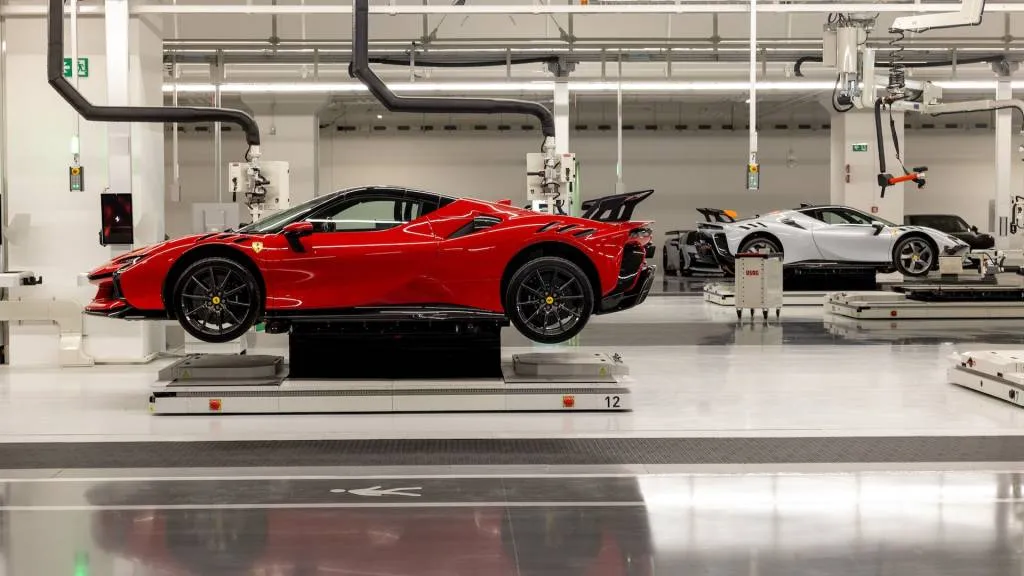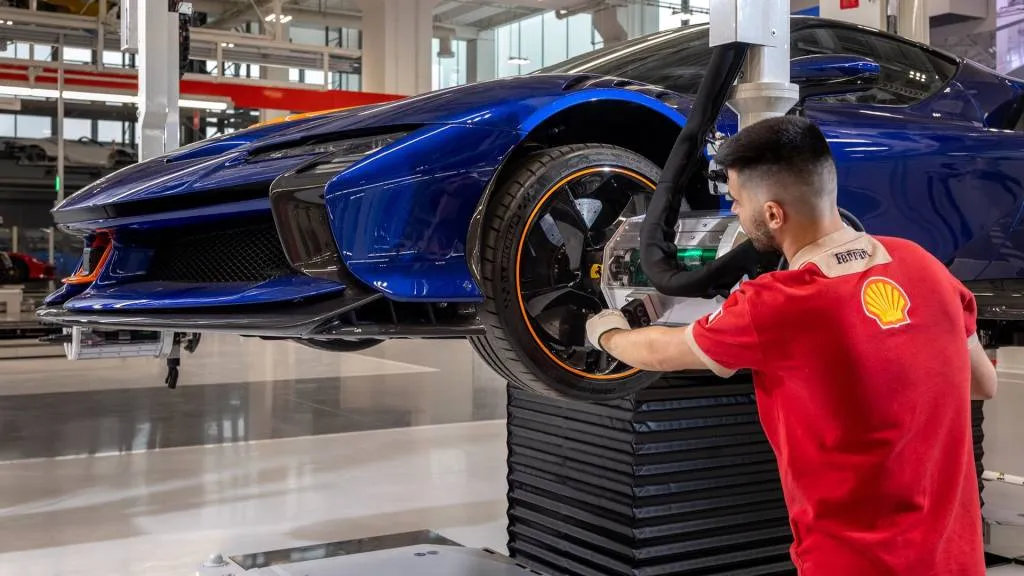Green Car Reports
Explore the world of green cars and their significant environmental impact. This article discusses various types of green vehicles, including electric and hybrid models, and highlights advancements in technology that promote sustainability. Learn about key players in the market, emerging trends, and challenges facing the green car industry. Discover how green vehicles can reduce emissions, improve energy security, and contribute to a healthier planet. Stay informed about the future of transportation and the role of green cars in combating climate change.
The Future of Green Cars: An Overview of 2023 Trends
Understanding Green Cars and Their Environmental Impact
Green cars are vehicles designed with environmental sustainability in mind. They include a range of options such as electric vehicles (EVs), hybrids, plug-in hybrids, and hydrogen fuel cell vehicles. Each category of green cars aims to reduce the dependence on fossil fuels and lower emissions, contributing to healthier air quality and mitigating climate change.
Electric vehicles (EVs) operate solely on electricity and have become increasingly popular due to advancements in battery technology. They produce zero tailpipe emissions, which significantly reduces the release of greenhouse gases into the atmosphere. Additionally, the energy source for charging these vehicles is becoming more renewable, further enhancing their environmental benefits. As the infrastructure for EV charging expands, so does the accessibility and practicality of adopting these vehicles.
Hybrids combine traditional internal combustion engines with electric propulsion to improve fuel efficiency. They generate lower emissions compared to conventional cars and often incorporate regenerative braking to enhance energy conservation. Plug-in hybrids take this a step further, allowing drivers to charge their batteries via standard electrical outlets while offering the option to switch to gasoline power for extended range.
The environmental impact of using green vehicles extends beyond immediate emissions reduction. By decreasing reliance on fossil fuels, green cars contribute to greater energy security and sustainability. Furthermore, government regulations and incentive programs are increasingly supporting the transition toward greener transportation. These include tax credits for EV purchases and emissions standards designed to phase out less efficient vehicles.
The technology surrounding green cars is rapidly evolving, with ongoing developments aimed at enhancing performance, reducing costs, and increasing overall efficiency. Industry stakeholders, from automakers to policymakers, are recognizing the pressing need for sustainable transportation options that support the global effort to combat climate change. As a result, green vehicles are poised to play a central role in the future of transportation.
Key Players in the Green Automobile Market: A Look at 2023 Models
The landscape of the green automobile market is increasingly being shaped by both established automakers and innovative new entrants, all vying to make significant contributions to sustainability in 2023. Major players like Tesla, Ford, and Toyota are continuing to lead the charge with groundbreaking electric vehicles (EVs) and hybrid models that cater to the environmentally conscious consumer.
Tesla remains at the forefront with its 2023 Model Y and Model 3, featuring advanced battery technology that extends range and performance. Both models utilize cutting-edge features such as autopilot capabilities, reducing the environmental impact of transportation while providing an enjoyable driving experience. Pricing for these models typically starts from around $40,000, making them competitive in the growing EV market.
Ford has made substantial efforts to transition to greener options with its all-electric Ford Mustang Mach-E. This versatile SUV has been designed not only for performance but also for functionality, boasting an impressive range of up to 300 miles on a full charge. The starting price of approximately $45,000 positions it as an appealing choice against traditional gas-powered SUVs, particularly for families seeking eco-friendly alternatives.
Toyota continues to innovate with its hybrid models; the 2023 Toyota Prius offers improved fuel efficiency with an eye on sustainability. With a price range starting at around $25,000, the Prius incorporates advanced safety features and a reputable track record for reliability. Its hybrid technology represents a convenient entry point for consumers transitioning to greener vehicles.
Moreover, newer brands such as Rivian and Lucid Motors are introducing compelling luxury EVs, like the R1T and Lucid Air, that challenge traditional norms of performance and aesthetics. With the ongoing investment and development in autonomous driving and AI integration, these companies are well-positioned to capture the attention of discerning eco-friendly consumers.
In conclusion, the competition among these key players is intensifying as they strive to develop models that not only reduce carbon footprints but also enhance consumer confidence in green technologies. The innovations and pricing strategies undertaken by these brands highlight their commitment to moving the automotive industry toward a more sustainable future.
Advancements in Green Automotive Technology
The green automotive industry is witnessing remarkable technological advancements that are reshaping the future of personal and public transportation. Prominent among these developments is the significant improvement in battery technology. Solid-state batteries, for instance, have emerged as a game changer, promising longer ranges and significantly reduced charging times compared to traditional lithium-ion batteries. This innovation not only enhances the convenience for consumers but also contributes to broader adoption of electric vehicles (EVs) by alleviating concerns regarding range anxiety.
Moreover, charging infrastructure is evolving rapidly to meet the demands of an increasing number of electric vehicles on the road. The installation of ultra-fast charging stations is on the rise, enabling drivers to recharge their vehicles in a fraction of the time previously required. This development is critical in addressing one of the main barriers to adopting green cars, as it assures users that they will not be stranded without access to a charging station.
Energy efficiency is another area of focus within the green automotive sector. Manufacturers are integrating smart technology into vehicles, allowing for real-time data analysis and optimizing performance based on driving conditions. This includes adaptive energy management systems that maximize battery efficiency and minimize waste. As a result, vehicles become not only more sustainable but also offer enhanced user experiences through intuitive interfaces and connectivity.
These advancements in technology have significant implications for the industry’s trajectory. With enhanced battery breakthroughs, improved charging solutions, and more energy-efficient designs, the barriers to widespread adoption of electric and hybrid vehicles are being systematically dismantled. As these innovations take hold, they are likely to reduce overall costs associated with green cars, making them an increasingly viable option for consumers and fleet operators alike, thereby propelling the shift toward a more sustainable transportation landscape.
Challenges Facing the Green Car Industry and Future Outlook
The green car industry has made significant strides in recent years; however, several challenges continue to hinder its growth. One of the most pressing issues is the supply chain for battery materials. The production of electric vehicle (EV) batteries relies heavily on materials such as lithium, cobalt, and nickel. Fluctuations in the availability and prices of these materials can lead to production delays and increased costs, ultimately affecting the affordability of green vehicles. Additionally, concerns regarding environmental and ethical sourcing of these materials pose a challenge to manufacturers striving for sustainability.
Another significant barrier is the accessibility of charging stations. Although the number of charging stations is steadily increasing, they remain inadequate in many regions. In urban areas, there is often a lack of infrastructure to support widespread EV adoption, which can deter potential buyers. The installation of charging stations in public spaces and residential areas is crucial to ease consumer anxiety regarding range and charging availability.
Consumer perception also plays a vital role in the acceptance of green cars. Many potential buyers still harbor misconceptions about electric vehicles, such as range limitations and performance issues. Educational initiatives and enhanced marketing strategies are essential to reshape consumer perceptions and highlight the benefits of adopting green technologies.
Financial barriers further complicate the situation, as the initial cost of electric vehicles remains high, despite potential savings on fuel and maintenance. Government policies, incentives, and tax rebates have been instrumental in promoting electric vehicle adoption, making them more accessible to a broader audience.
Looking forward, the relationship between evolving consumer preferences and increasing environmental awareness is expected to drive market growth. As climate change concerns heighten, the demand for sustainable solutions, including green automobiles, will likely continue to rise, shaping the future of the industry.

Ferrari e-building
Adolfo Urso, Italy’s industry minister, said a planned intermediate assessment of progress toward meeting the stricter emissions rules that underpin the internal-combustion ban should be moved forward from 2026 to next year, declaring that the EU needs a “pragmatic vision” for the future of the auto industry.
The current right-wing Italian government of Giorgia Meloni wants EU member states to have more freedom in the technologies used to meet emissions-reduction goals, as well as a more gradual shift away from combustion engines, Automotive News Europe notes. Some markets in Northern Europe and Scandinavia don’t need more time for the transition, though, as they’re already at very high rates of plug-in vehicles.

Ferrari e-building
The 2035 end date for internal combustion was first proposed in 2021, with steep cuts in emissions on the way toward that goal. But that policy was softened in 2023 after Germany successfully lobbied for a loophole for vehicles burning e-fuels. These synthetic fuels are billed as having lower overall carbon emissions than gasoline or diesel, and are viewed by some automakers—including Italy’s Ferrari—as a savior for internal-combustion cars.
The U.S. has no national plan for phasing out combustion engines. Current emissions rules could lead to 67% EV sales by 2032, regulators estimate, but they could also be overturned if the Republican Party seizes power in the upcoming election. California has enacted its own strict 2035 emissions rules that would end sales of most combustion-engine vehicles, with an exception for 50-mile plug-in hybrids.
green car reports,green car reports,green car reports,green car reports,green car reports,green car reports,green car reports,green car reports,green car reports,green car reports,green car reports,green car reports,green car reports,green car reports,green car reports,green car reports,green car reports,green car reports,
_________________________________________________________________________________________________________________________________________________________________________________
